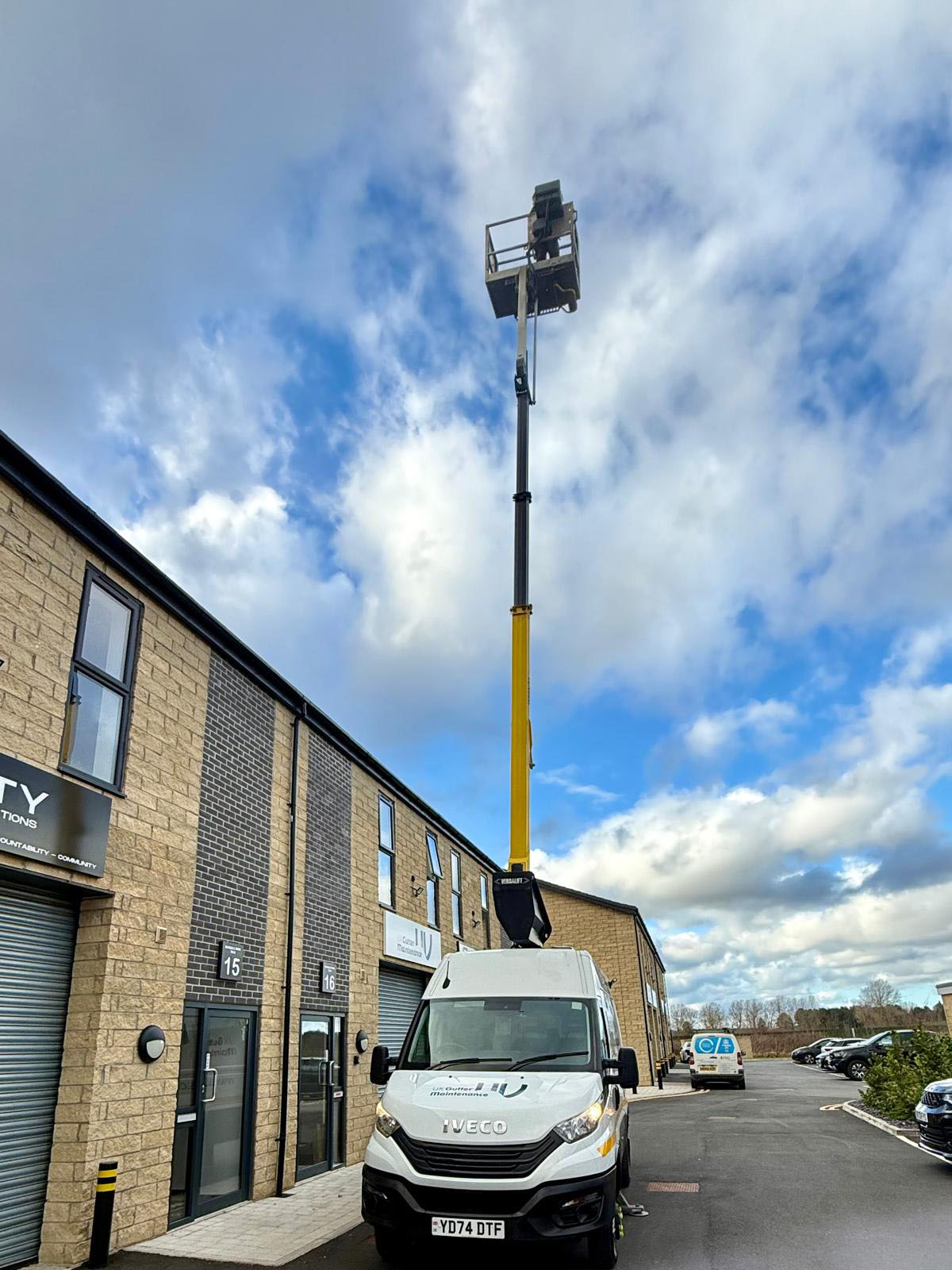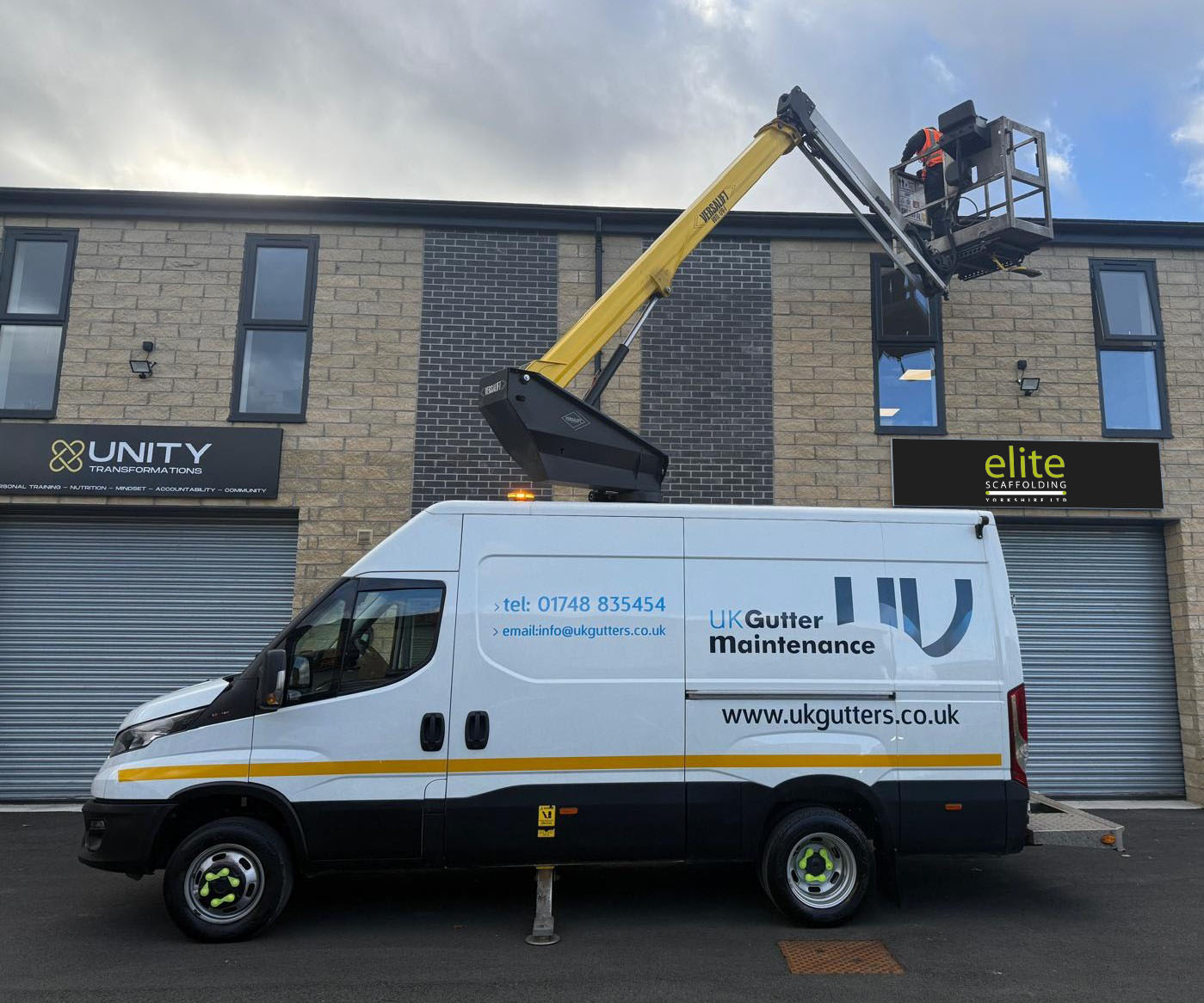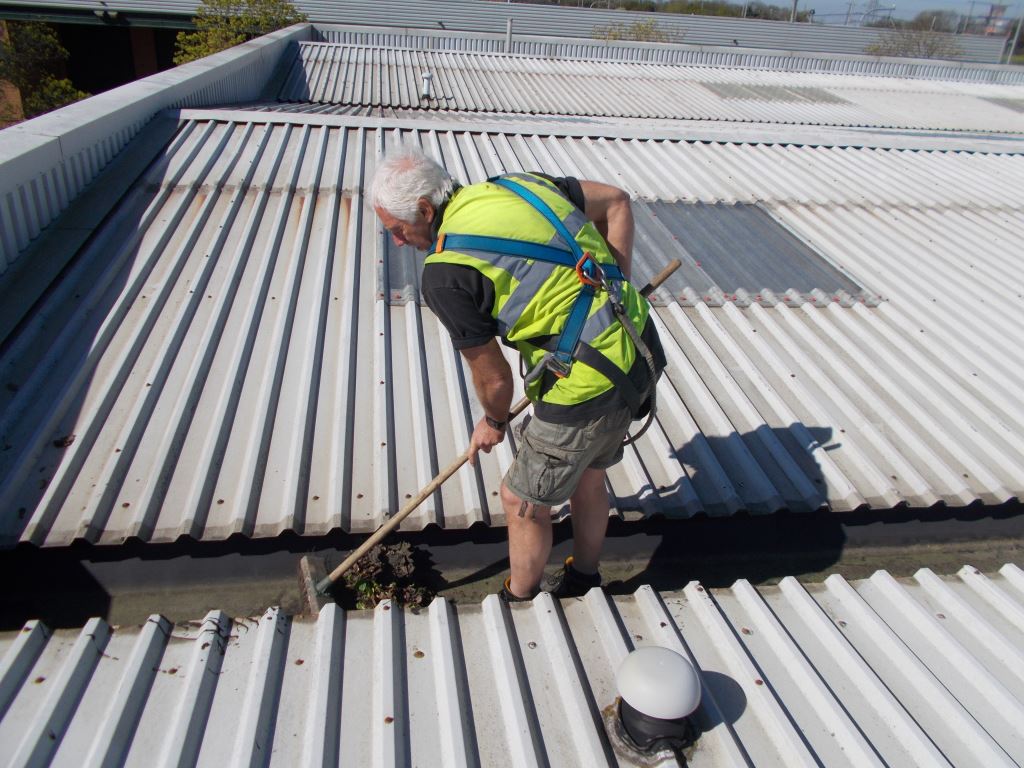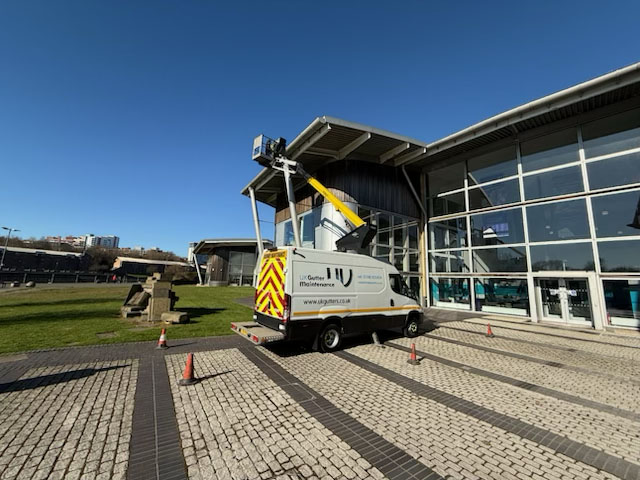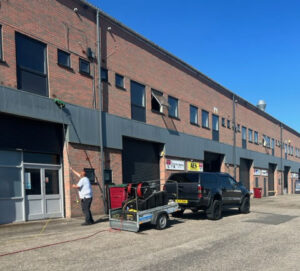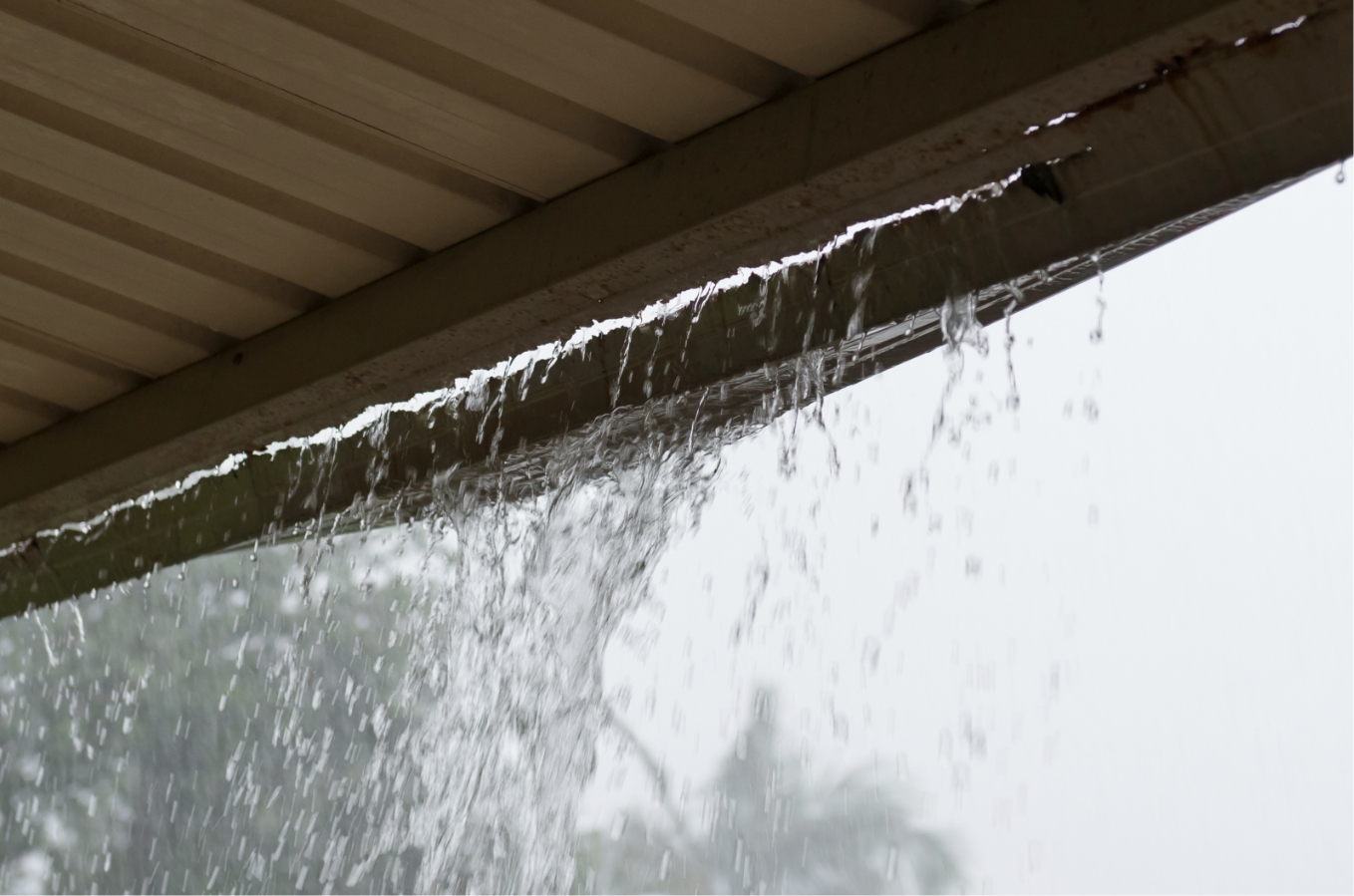Commercial gutter maintenance is an essential component of responsible property management, directly impacting your building’s structural integrity, value, and safety. Neglecting this crucial maintenance can lead to significant and costly damage that extends far beyond the gutters themselves.
Summer provides the ideal window for comprehensive gutter maintenance due to favorable weather conditions, improved visibility of issues, and minimal business disruption. By scheduling your commercial gutter maintenance during the summer months, you ensure your property is fully protected before the challenging autumn and winter conditions arrive.
Why Is Commercial Gutter Maintenance Important?
Commercial gutter maintenance isn’t merely an aesthetic concern – it’s a crucial investment in your property’s longevity. An effective gutter system collects and redirects rainwater away from your building’s roof and foundation, preventing moisture damage to both the exterior and interior structures.
Neglecting gutter maintenance can lead to significant and expensive problems. When gutters become blocked, water cannot flow properly, causing it to back up and infiltrate various parts of your property. This stagnant water doesn’t just disappear – it finds the path of least resistance, often directly into your building.
The Consequences of Neglected Gutters
The repercussions of poor commercial gutter maintenance extend far beyond occasional overflowing:
- Flooding and damage to soffits and fascias
- Water seepage causing internal property damage
- Structural damage to foundations
- Soil erosion around the building base
- Rusting of metal components like flashing and hangers
- Weakened foundation due to soil erosion
- Damage to load-bearing walls
- Mould growth that compromises structural integrity
- Pest infestations in debris-filled gutters
Different gutter types can fail in various ways, creating specific problems:
- Changes to roof slopes can cause water to project beyond gutters
- Cast iron gutters may split at joints, allowing water into walls
- Plastic and aluminium gutters that sit away from walls permit water infiltration
- The weight of standing water can cause cracks, breaks, or disconnections
Ensuring clean, unobstructed gutter flow is therefore essential for safeguarding not just your building’s appearance, but its very foundation and structural integrity.

What Are The Common Causes Of Commercial Gutter System Failure?
Commercial gutter systems can fail for numerous reasons. Common culprits include:
- Blockages from debris – Leaves, branches, and even birds’ nests can impede water flow
- Physical damage – Cracks, breaks, or disconnections caused by standing water weight or external factors
- Alignment issues – Improper positioning of gutters or downpipes
- Roof modifications – Changes in roof slope affecting water runoff
- Material deterioration – Degradation of cast iron, asbestos cement, or other materials
- Incompatible materials – Using metals that react with each other, like copper with aluminium
Understanding these failure points helps property managers address issues before they escalate into costly problems.
How Often Should Commercial Gutters Be Cleaned?
For optimal performance, commercial gutters should be cleaned at minimum twice yearly, though three times is ideal. The recommended schedule includes:
- Late spring cleaning to remove winter debris
- Early autumn maintenance before leaf fall
- Late autumn cleaning after all leaves have dropped
However, cleaning frequency may need adjustment based on your building’s specific circumstances, including:
- Location and surrounding environment
- Amount of nearby foliage
- Local rainfall patterns
- Building height and accessibility
Regular inspections between cleanings are also vital, particularly before anticipated heavy rainfall periods.
Why Is Summer The Best Time For Commercial Gutter Maintenance?
Summer offers ideal conditions for commercial gutter maintenance for several compelling reasons. The warmer weather makes inspecting your guttering systems considerably easier since accumulated dirt and debris have dried out, making problem areas more visible and simpler to clear.
The improved weather conditions also create a safer working environment for professional maintenance technicians who need to access your building’s gutters, often at considerable heights.
The UK summer typically provides the most favorable conditions for outdoor maintenance work with:
- Longer days and increased daylight hours
- Generally drier weather with fewer interruptions from rain
- Reduced safety risks for technicians
- Drier gutters that are easier to clean and repair
Summer is also a quieter operational period for many businesses, allowing maintenance work to proceed with minimal disruption to tenants and daily business activities.
Perhaps most importantly, summer maintenance prepares your gutter system for the challenging weather ahead. By addressing issues during favorable conditions, you ensure your gutters are ready to handle the increased rainfall of autumn and winter, preventing emergency repairs during inclement weather.
What Are The Benefits Of Regular Commercial Gutter Maintenance?
Regular gutter maintenance is a cost-effective preventive measure that helps avoid significant damage and expense. You can liken it to a ‘dental check-up’ that prevents more serious problems down the line.
The key benefits of consistent commercial gutter maintenance include:
- Preventing Costly Repairs: Regular cleaning prevents expensive issues such as roof leaks, wall damage, and basement flooding.
- Protecting Property Value: Well-maintained gutters preserve building value by preventing water damage, maintaining structural integrity, preserving aesthetic appeal, and deterring pests and mould.
- Enhancing Safety: Proper maintenance prevents hazards like winter ice buildup or structural weakening, ensuring properties meet safety standards and reducing accident risks.
- Preventing Pest Infestations: Clean gutters eliminate breeding grounds for rodents and insects that can damage your property.
- Preserving Appearance: Functional gutters improve your building’s overall appearance, enhancing curb appeal and professional image.
- Avoiding Mould and Mildew: Removing blockages prevents the water accumulation that leads to harmful mould and mildew growth.
- Protecting Landscaping: Preventing downspout blockages stops overflow that can damage expensive landscaping.
- Weather-Proofing: Clean gutters ensure proper drainage during heavy rain or snow, preventing water damage and potential collapse from excess weight.
- Peace of Mind: Knowing your gutters are functioning properly provides valuable peace of mind for property managers.
Taking a proactive approach allows for identifying potential issues before they become major problems, ensuring water flows away from the building as intended. This includes not just clearing debris but implementing preventive measures like installing guards and filters to reduce future maintenance requirements.
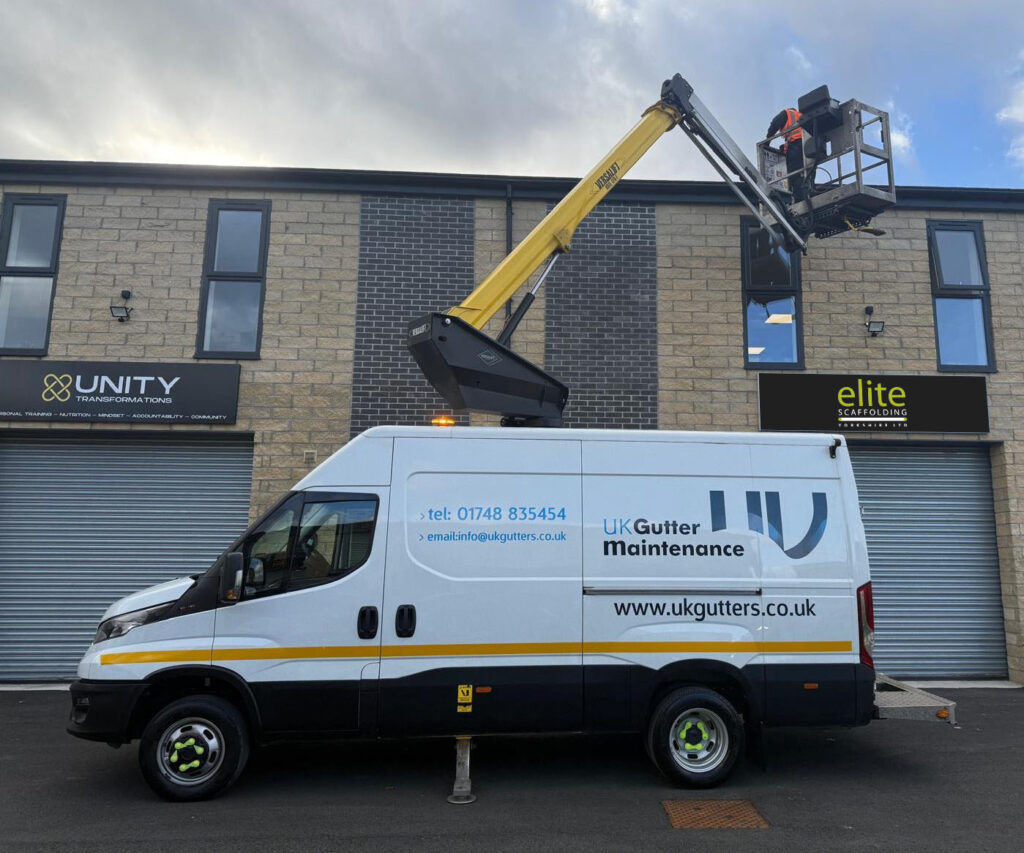
What Types Of Equipment Are Used For Professional Commercial Gutter Cleaning?
Professional commercial gutter cleaning requires specialised equipment that is powerful, precise, and durable. Essential features include:
- Robust motors capable of handling wet leaves and various debris
- Excellent reach and flexibility for high-rise properties
- Extendable components with agile maneuverability
- Durability to withstand diverse weather conditions
Safety remains paramount in commercial gutter maintenance. Professional equipment features safety locking mechanisms on stands and cherry pickers, ensuring operators remain firmly anchored even when working at significant heights. This dramatically reduces risks compared to traditional methods.
How Can A Proactive Approach To Gutter Maintenance Save Money?
Adopting a proactive approach to commercial gutter maintenance through regular scheduled inspections and cleanings yields significant cost benefits over time. By identifying and addressing minor issues – such as small blockages or early signs of wear – before they escalate into major problems, businesses avoid expensive structural repairs to buildings.
This preventive strategy allows for spotting potential issues early, ensuring continuous proper water drainage and preventing water infiltration that leads to extensive damage.
Regular maintenance extends the lifespan of your gutter system, delaying costly complete replacements and providing better return on your property investment. Additionally, consistent maintenance helps identify developing issues with related systems, such as roofing problems that might otherwise go undetected until significant damage occurs.
What Safety Measures Are Important In Commercial Gutter Cleaning?
Safety considerations are critical in commercial gutter maintenance, particularly for large or high-rise buildings. Key safety measures include:
- Using appropriate equipment with safety features like locking mechanisms for ladders and stands
- Employing experienced maintenance teams like those supplied by UK Gutter Maintenance who are familiar with industry standards and safety protocols
- Utilising proper access equipment such as cherry pickers or scaffolding for large-scale projects
- Implementing traffic management plans in coordination with local authorities when working near roadways
- Regular inspection and testing of all equipment before use
Professional maintenance teams should have extensive training and undergo regular updates on the latest safety standards, protocols, and innovations. This ensures they can tackle various projects safely and efficiently while minimizing risks to both workers and property.
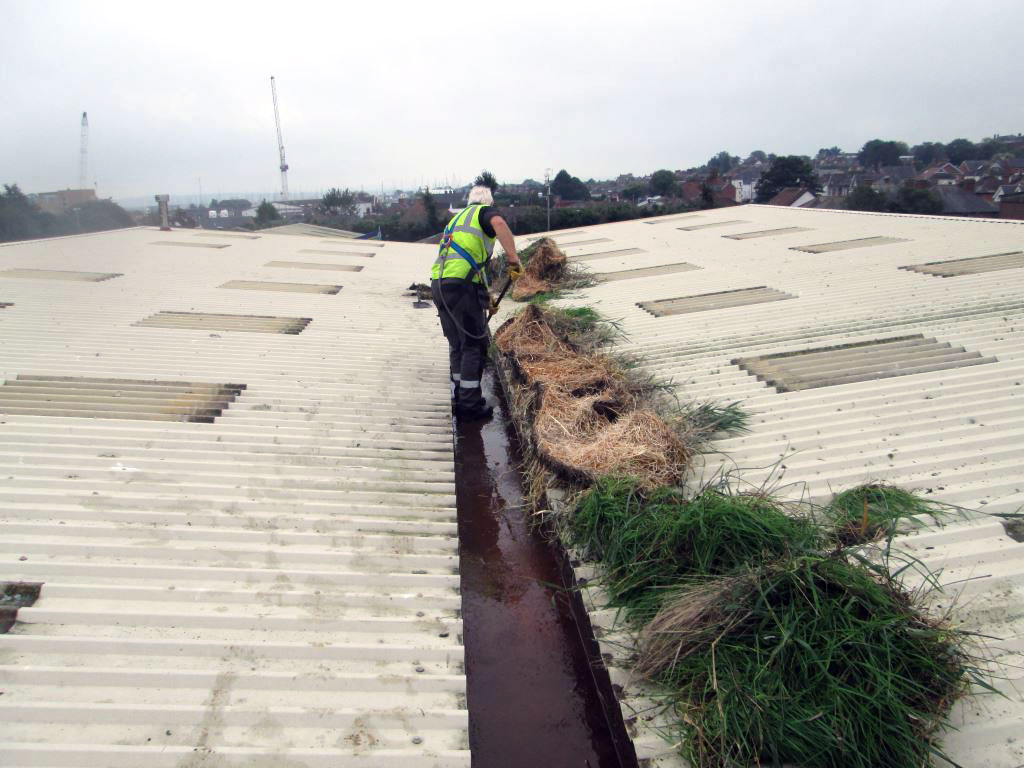
How To Identify Signs Of Gutter Issues
Regular inspections should look for these specific warning signs:
- Leakage at joints, evident through rust stains on metal guttering or distinctive staining patterns on nearby surfaces
- Unusual angles or bends in guttering that may indicate blockages
- Moss growth, which can signal deterioration, particularly in asbestos cement guttering
- Corrosion on brackets supporting metal gutters
- Standing water in gutters, suggesting a blocked fall or improper drainage
- Sagging gutters or overflow during rainfall
Recognising these early indicators allows property managers to address issues promptly before they develop into costly structural problems.
DIY vs. Professional Commercial Gutter Maintenance
While DIY gutter maintenance might seem cost-effective initially and offers flexibility in scheduling, it presents significant challenges and risks:
- DIY instructional videos cannot provide the necessary safety equipment, proper tools, or experience required for effective and safe gutter maintenance
- Working at heights without proper equipment and training is extremely dangerous, comparable to “tightrope walking without balance”
Professional gutter cleaning services offer greater value in the long term by:
- Solving multiple problems simultaneously
- Maintaining optimal gutter functionality
- Saving valuable time
- Providing significantly safer operations than DIY approaches
Professional services are typically fully equipped with specialised tools designed specifically for commercial gutter maintenance and can ensure consistent year-round performance.
Challenges in Large-Scale Commercial Gutter Maintenance
Large commercial properties present unique maintenance challenges, particularly in urban environments:
- Access Equipment Requirements: High-rise buildings necessitate specialised equipment like cherry pickers or scaffolding systems for safe access
- Traffic Management Considerations: Work in urban areas or along busy thoroughfares requires coordination with local authorities to minimise disruption
- Stakeholder Collaboration: Projects affecting multiple tenants or neighboring properties demand effective communication and coordination with all parties
Professional gutter maintenance companies have the experience and resources to navigate these complexities while ensuring comprehensive service.
Protecting Your Investment Through Proper Maintenance
Don’t wait for the first autumn downpour to discover gutter problems. Contact UK Gutter Maintenance today for a comprehensive summer gutter inspection and maintenance service. Our professional team has the expertise, equipment, and experience to ensure your commercial property remains protected year-round.
Call us on 01748 835 454 or click on the Get a Free Quote button below to schedule your summer maintenance appointment and protect your valuable commercial property.

